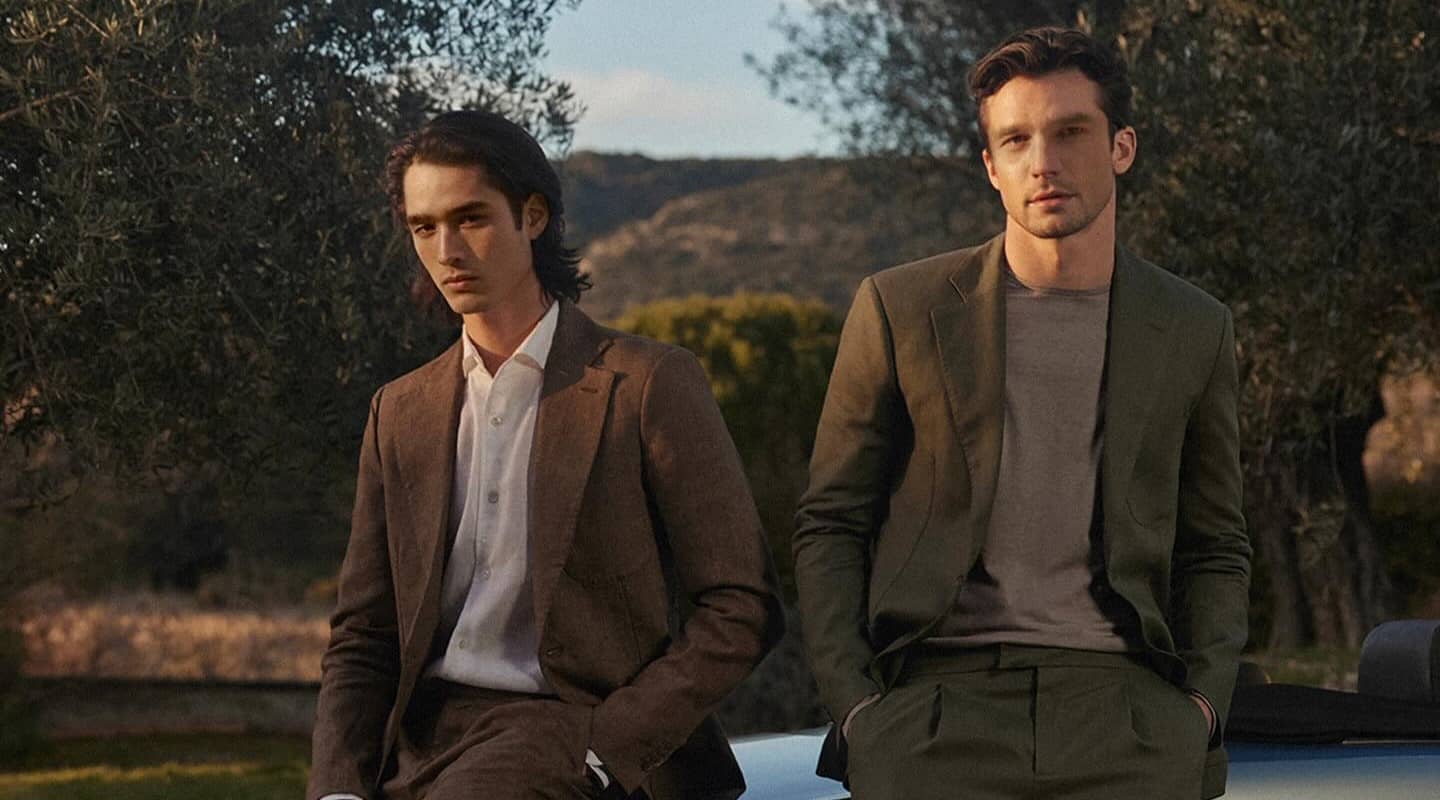Diving headfirst into the vintage aesthetic is like opening a treasure chest of style, where every piece tells a story and every story is worth telling. This isn’t just about donning old clothes; it’s about embracing a retro style that transcends time, a nod to the sartorial elegance of decades past.
It’s probably one of the closest things we have to time travel. In this exploration of vintage fashion, we’re not just reminiscing about the good old days; we’re rediscovering them for the modern man.
From the sharp lines of tailored suits that whisper of the Roaring Twenties to the rebellious leather jackets that shout from the rooftops of the 1950s, this guide is your compass to navigating the rich and textured world of vintage and retro style.
Join us as we unlock the secrets to mastering the vintage aesthetic, in which every garment is a piece of history, every icon a teacher, and every outfit a lesson in timeless cool.

What Is the Vintage Aesthetic?
The vintage aesthetic encapsulates the fashion, accessories, and overall style from the 1920s to the 1980s, characterized by its quality, craftsmanship, and unique details. This era-spanning approach to fashion is not just about nostalgia; it’s a homage to the periods that defined and pushed the boundaries of men’s style.
Vintage fashion for men is distinguished by its attention to detail, from the cut of a suit to the pattern of a fabric, each piece tells a story of its time.
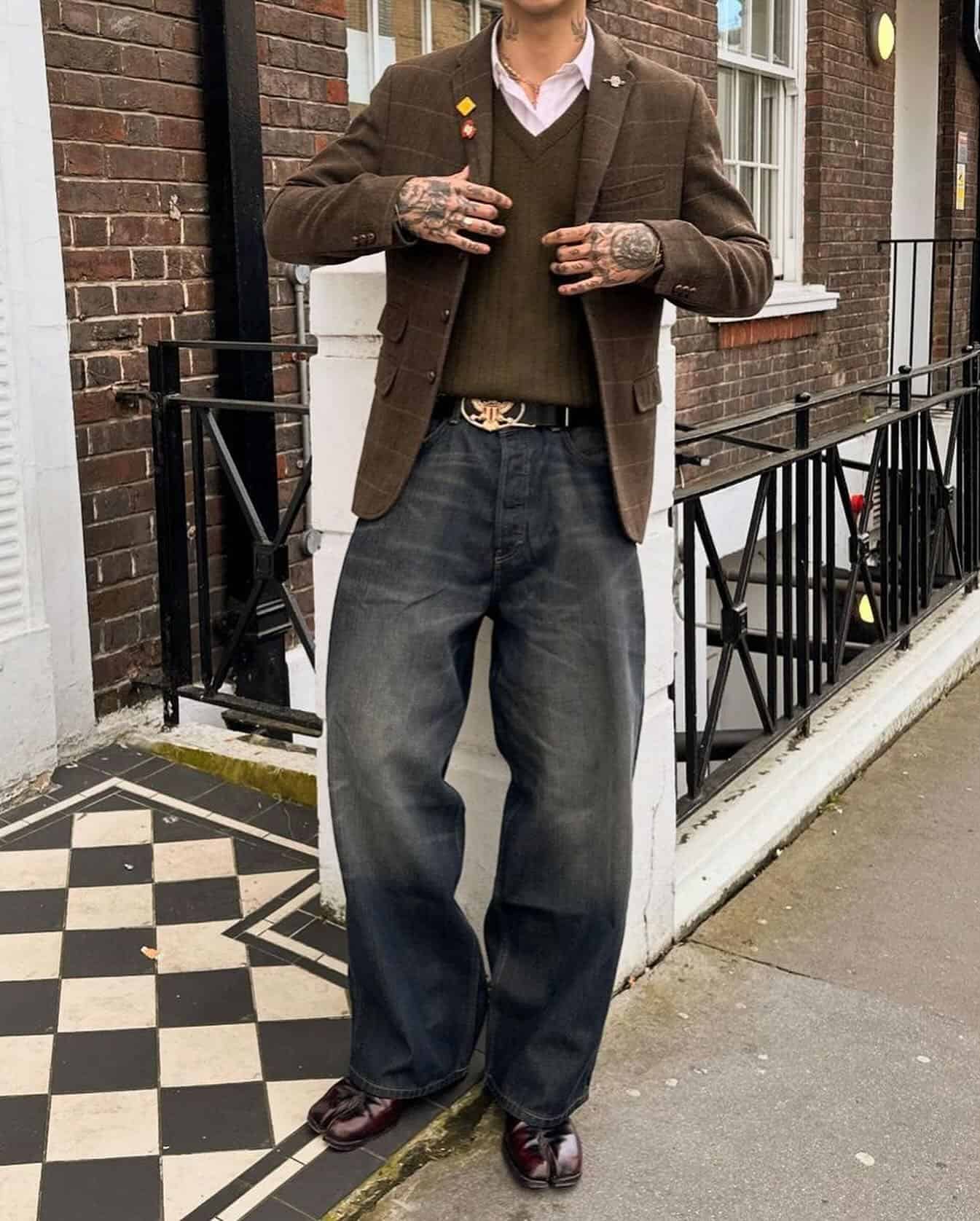
The Evolution of Vintage Style in Menswear: Embracing the Retro Aesthetic
Picture this: you’re rifling through a rack of vintage threads, each piece a time capsule from a bygone era. The musty scent of decades past fills your nostrils as your fingers graze the worn leather of a perfectly broken-in jacket.
This isn’t just shopping; it’s a sartorial treasure hunt, a quest to uncover the gems of menswear’s storied past.
Welcome to the vintage style world, where fashion-forward men are embracing the retro aesthetic and making it their own.
The Early 20th Century: The Birth of Iconic Menswear Pieces
Let’s take a trip back to the early 1900s, a time when menswear was undergoing a serious shake-up. The stuffy, buttoned-up fashions of the Victorian era were on their way out, and a new breed of garments was stepping into the spotlight.
Take the trusty T-shirt, for example. Once a lowly undergarment reserved for sailors and laborers, this humble piece of cotton has become a blank canvas for sartorial self-expression.
From classic graphic tees featuring the mugs of Hollywood heavyweights like James Dean and Marlon Brando to the artfully distressed varieties favored by modern-day vintage aficionados, the T-shirt has come a long way, baby.
And let’s not forget the leather jacket, a true icon of rebellious style. Originally designed for pilots and motorcyclists, this tough-as-nails garment has symbolized effortless coolness for generations.
Just picture Brando in The Wild One, perched atop his Triumph Thunderbird, the epitome of devil-may-care attitude. Today, the leather jacket is a staple of every vintage-loving gent’s wardrobe, a piece that only gets better with age and wear.
The 1940s and 1950s: The Golden Age of Menswear
Fast forward a few decades, and we land smack dab in the middle of the golden age of menswear. The 1940s and ’50s were a time when dressing sharp was the norm, not the exception. Picture the dapper gents of the era, decked out in crisp, tailored suits, their hair slicked back with pomade, their shoes shined to a mirror finish.
It was the age of the “man’s man,†when style was a serious business, and looking good was a full-time job.
Just look at the enduring popularity of shows like “Mad Men,†which sparked a renewed interest in the sleek, tailored style of the 1950s and early ’60s. Suddenly, every guy wanted to channel his inner Don Draper, complete with the impeccably cut suits and the old-fashioned charm.
And who could blame them? There’s just something about that era’s aesthetic that oozes cool, even half a century later.
The 1960s and 1970s: The Rise of Counterculture Fashion
But what’s a little rebellion without a little counterculture? Enter the 1960s and ’70s, a time when the fashion world was turned on its head by a new generation of style renegades.
The mods, with their slim-cut suits and scooters, and the hippies, with their flowing, psychedelic threads and peace signsâ€�these were the folks who broke the mold and rewrote the rules of men’s fashion.
Today, the influence of this era can be seen in the collections of designers like Hedi Slimane, who’s made a career out of channeling the rock ‘n’ roll spirit of the ’60s and ’70s into his razor-sharp tailoring.
And then there are the vintage shops and flea markets, veritable treasure troves of bold prints, flared jeans, and shearling coats that would make any retro-obsessed gent weak in the knees.
The 1980s and 1990s: Bold Colors and Oversized Silhouettes
But let’s not forget the more recent past, shall we? The ’80s and ’90s were those glorious decades of excess and experimentation when bigger was better and bolder was best. This was the era of the power suit, with its exaggerated shoulders and double-breasted silhouette, a sartorial symbol of the go-go, “greed is good†mentality of the time.
And then there were pop culture phenoms like “Stranger Things,†which brought the retro aesthetic of the ’80s back into the mainstream. Suddenly, everyone was rocking vintage
It was a nostalgia trip but with a modern twist�a way to pay homage to the past while still looking firmly towards the future.
The 2000s and Beyond: Vintage Revival
So where does that leave us today? In the midst of a full-blown vintage revival, that’s where. From the runways of Paris to the streets of Tokyo, fashion-forward gents are raiding their grandfathers’ closets and scouring thrift stores for one-of-a-kind pieces that ooze character and charm. The vintage aesthetic is an invitation to revisit the past.
But it’s not just about the clothes themselves. It’s about the stories they tell, the history they hold. A perfectly worn-in pair of Levi’s 501s, a beat-up leather jacket with a few too many miles on itâ€�these are the pieces that have lived, seen things, and been places.
They’re the sartorial equivalent of a weathered face or a well-traveled passport, a badge of honor for the man who wears them.
And that, my friends, is the heart and soul of vintage style. It’s not about chasing trends or following the crowd. It’s about carving your own path, about finding those pieces that speak to you on a personal level and making them your own.
The vintage aesthetic is about quality over quantity, about investing in garments that are built to last, not just for a season, but for a lifetime.
As the inimitable Yves Saint Laurent once said, “I have often said that I wish I had invented blue jeans: the most spectacular, the most practical, the most relaxed and nonchalant. They have expression, modesty, sex appeal, simplicity â€Â� all I hope for in my clothes.â€Â
And that, in a nutshell, is what the vintage aesthetic is all about. It’s about finding those pieces that make you feel like the best version of yourself, whether it’s a perfectly broken-in pair of boots, a vintage concert tee that’s seen better days, or a timepiece that’s been ticking away for decades.
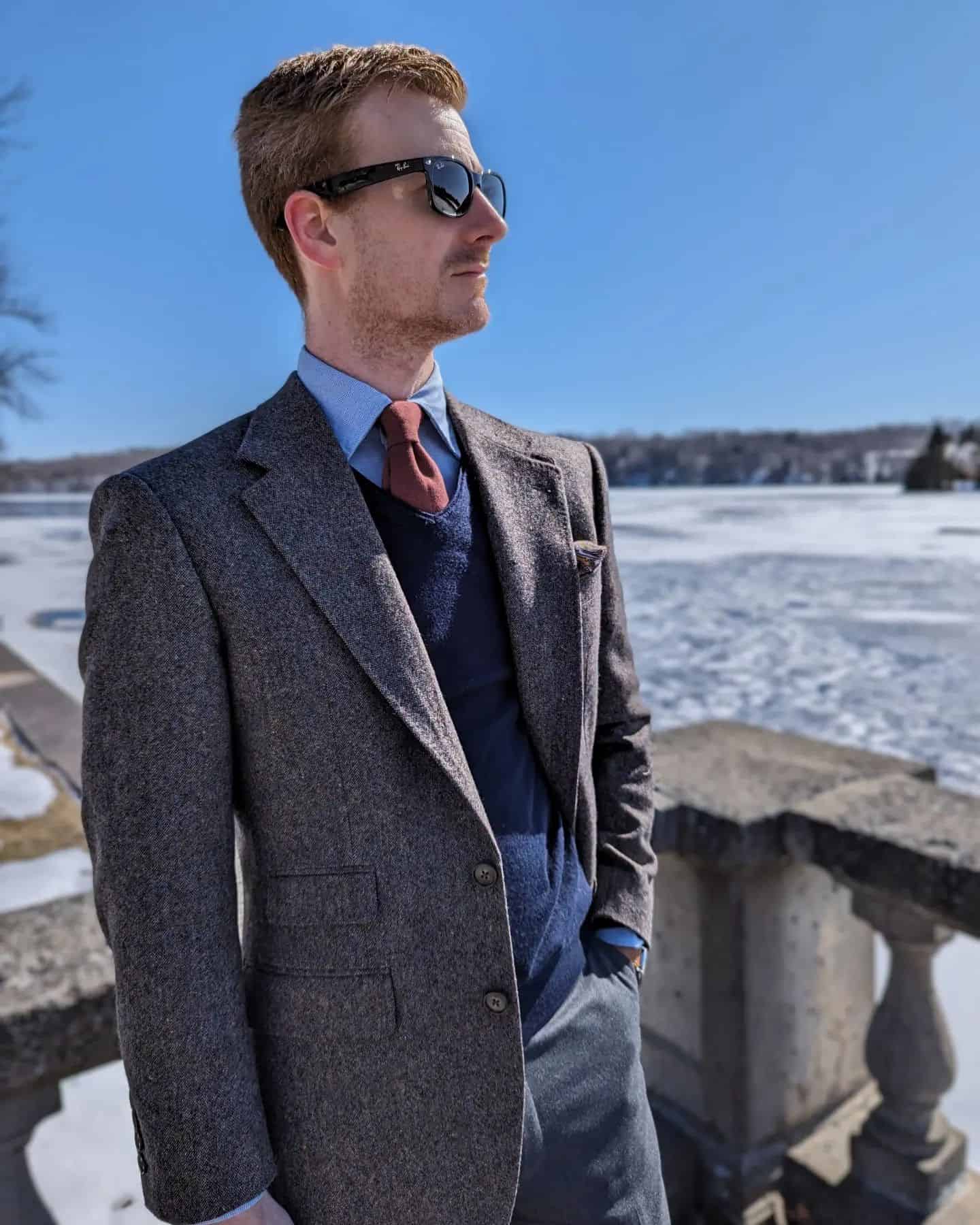
Key Components of Retro Style for Men: The Must-Haves
Tailored Suits: Bringing Back the Sharp
If there’s one thing that epitomizes vintage men’s style, it’s the tailored suit. The clean lines, the sharp silhouettes, the impeccable fit â€� a look transcends time and trends.
Whether you’re channeling the dapper gents of the 1920s or the sleek power dressers of the 1980s, a well-tailored suit is the foundation of any vintage-inspired wardrobe. Invest in quality fabrics and expert craftsmanship, and you’ll have a suit that will stand the test of time.
Leather Jackets: The Badge of Cool
From the bomber jackets of the 1940s to the biker jackets of the 1950s, the leather jacket has long been the uniform of the rebellious, the iconoclastic, the effortlessly cool.
There’s something about slipping on a leather jacket that instantly imbues you with a sense of rugged confidence, a devil-may-care attitude that says you’re not afraid to march to the beat of your own drum.
Whether you opt for a classic moto style or a sleek, minimalist design, a leather jacket is a must-have for any vintage-loving man.
Denim: The Everyday Hero
Jeans may be a staple of modern men’s fashion, but their roots run deep in vintage style. From the rugged workwear of the 1930s to the rebellious, youth-driven styles of the 1950s and beyond, denim has been a constant presence in the world of vintage fashion.
The key is to opt for classic cuts and washes, steering clear of overly distressed or trendy styles. A pair of selvedge denim jeans, worn in just right, is a vintage essential that will never go out of style.
Footwear: Step Up Your Game
The right footwear can make or break a vintage-inspired outfit. Whether you’re going for the dapper look of the 1920s with a pair of two-tone brogues or channeling the rebellious spirit of the 1950s with some classic Chuck Taylors, your shoes are an essential part of your retro ensemble.
Other timeless styles to consider include penny loafers, desert boots, and simple, minimalist sneakers. The key is to choose styles that are classic and versatile, with a focus on quality craftsmanship and materials.
Accessories: The Finishing Touches
No vintage-inspired look is complete without the right accessories. From fedoras and flat caps to vintage-inspired watches and sunglasses, these finishing touches are what take your outfit from good to great.
Look for pieces that are authentic to the era you’re channeling, but don’t be afraid to mix and match across decades for a more eclectic, personal style. A well-chosen accessory can be the difference between a costume and a genuine expression of your unique fashion sense.

Vintage Hairstyles & Grooming Trends: Look Sharp, Feel Sharp
Men’s Vintage Hairstyles
The vintage aesthetic isn’t just about what you wear; it’s about how you wear it. And that includes your hair. From the slick, pomaded styles of the 1920s and 30s to the longer, more unruly looks of the 1970s, vintage hairstyles are an essential part of the retro package.
Whether you opt for a classic side part, a rockabilly-inspired pompadour, or a shaggy, bohemian cut, the key is to work with your natural texture and face shape to find a style that feels authentic to you.
Retro Facial Hair
Facial hair has played a significant role in men’s style throughout the decades, from the clean-shaven looks of the early 20th century to the full beards and mustaches of the 1970s. When it comes to vintage-inspired grooming, the key is to choose a facial hair style that complements your overall look and feels true to your personal style.
A well-groomed mustache, a neatly trimmed beard, or a clean-shaven face can all work with a vintage aesthetic as long as they’re executed with care and attention to detail.
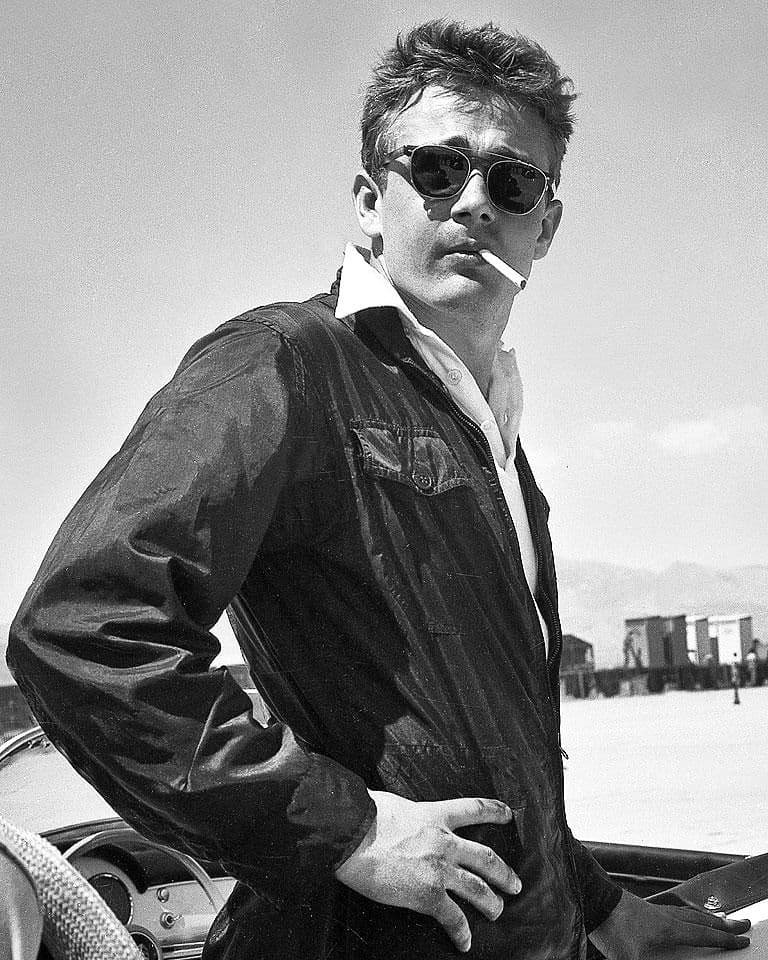
Men’s Vintage Fashion Icons: The Blueprint of Cool
James Dean and Marlon Brando: The Original Rebels
When it comes to vintage style icons, few loom larger than James Dean and Marlon Brando. These two rebels without a cause defined the aesthetic of the 1950s, with their brooding good looks, effortless cool, and signature style staples.
Dean’s iconic red jacket and white T-shirt combo in Rebel Without a Cause and Brando’s tough-guy leather jacket in The Wild One have become shorthand for a certain kind of timeless, rebellious style. To channel their look, keep it simple and understated, with a focus on classic pieces like plain T-shirts, jeans, and leather jackets.
The Beatles and The Rolling Stones: Rock ‘n’ Roll Chic
In the 1960s, two British bands redefined men’s fashion for a generation. The Beatles, with their mop-top haircuts, tailored suits, and Cuban heels, brought a new level of style and sophistication to the world of rock ‘n’ roll.
Meanwhile, The Rolling Stones embodied a more rebellious, bad-boy aesthetic, with skinny jeans, untucked shirts, and a general air of insouciance. Both bands’ influence can still be felt in men’s fashion today, from the slim-cut suits favored by modern-day mods to the rock ‘n’ roll edge of contemporary streetwear.
Steve McQueen: The King of Cool
If there’s one man who embodies the concept of effortless cool, it’s Steve McQueen. The actor’s rugged good looks and no-nonsense style made him an icon of 1960s and ’70s fashion, and his influence can still be felt today.
McQueen’s signature look was a mix of classic Americana and rebellious edge, with pieces like Harrington jackets, chambray shirts, and slim-fit chinos forming the backbone of his wardrobe.
To channel his style, focus on quality basics with a masculine, utilitarian vibe, and don’t be afraid to add a touch of rebellion with a leather jacket or a pair of aviator sunglasses.
David Bowie: The Shape-Shifter
Few musicians have had as profound an impact on men’s fashion as David Bowie. Throughout his career, Bowie was a chameleon of style, constantly reinventing himself and pushing the boundaries of what was possible in men’s fashion.
From the glam-rock androgyny of his Ziggy Stardust persona to the sharp-suited sophistication of the Thin White Duke, Bowie’s style was always a reflection of his artistic vision and his willingness to take risks.
To channel his look, embrace the power of self-expression, and don’t be afraid to experiment with different styles and silhouettes.
Cary Grant: The Epitome of Elegance
For a masterclass in timeless, elegant style, look no further than Cary Grant. The Hollywood legend was a paragon of sartorial sophistication, with a wardrobe that was classic, refined, and always impeccably tailored.
Grant’s signature look was a simple, understated one â€� a well-cut suit, a crisp white shirt, and a perfectly knotted tie â€� but he wore it with such ease and grace that he made it look effortless. To channel his style, invest in quality basics, focus on fit and tailoring, and cultivate an air of confident, understated elegance.
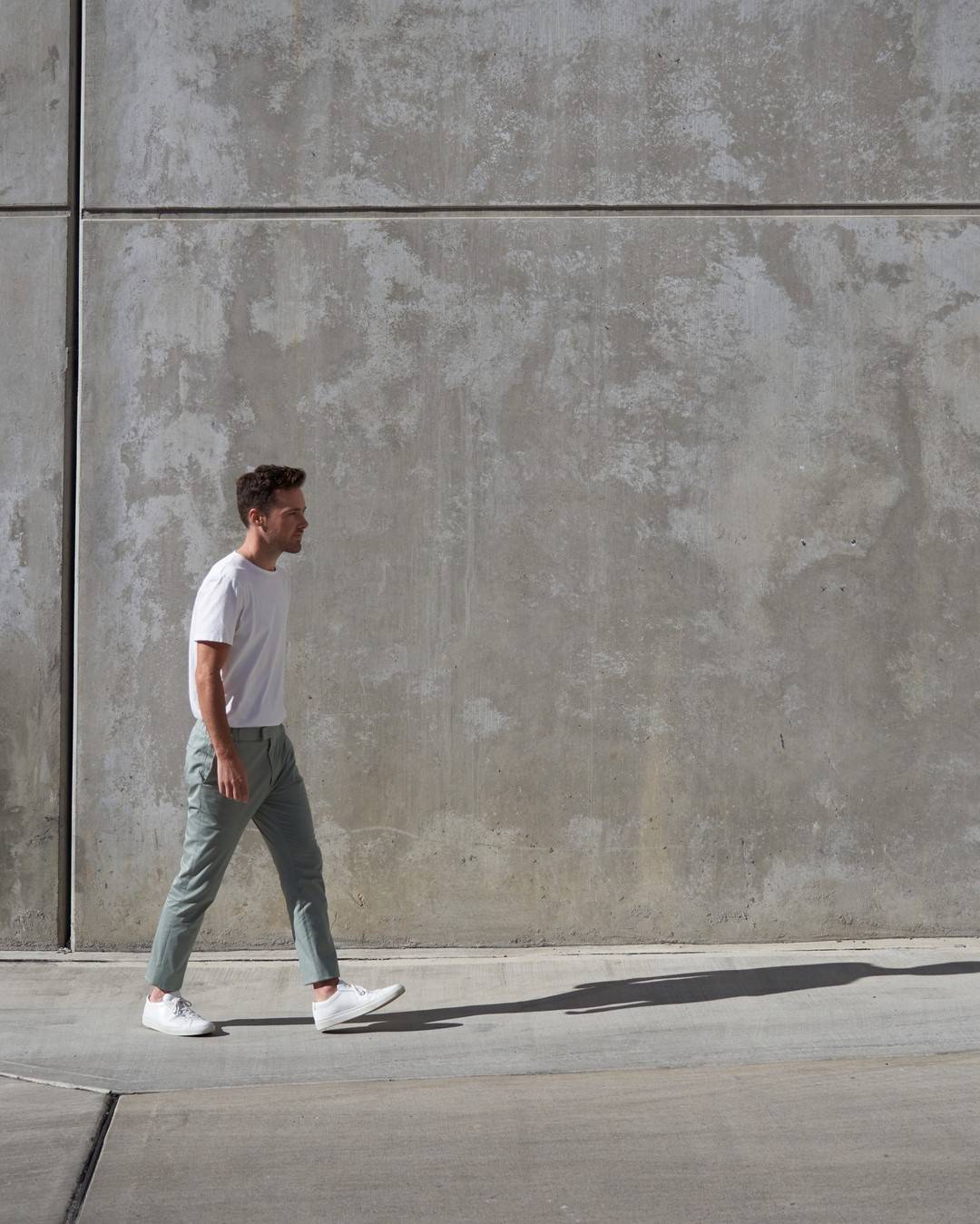
Retro Outfits for Men: How to Wear It Like You Mean It
Putting together a vintage-inspired outfit is all about mixing and matching pieces from different eras to create a look that feels authentic and personal. Start with a classic base � well-fitted pair of jeans, a simple T-shirt, or a tailored suit � and build from there.
Layer on pieces like a leather jacket, a denim shirt, or a pair of brogues, and don’t be afraid to mix and match patterns and textures. The key is to choose pieces that feel authentic to your personal style and to wear them with confidence.
Final Verdict: Why Vintage Will Never Go Out of Style
At the end of the day, vintage style is about more than just nostalgia â€� it’s about tapping into a sense of timeless cool that transcends trends and fashion cycles.
By embracing the vintage aesthetic, you’re not just wearing clothes â€� you’re wearing a piece of history, a story that’s been told and retold through the decades. And that’s a story that will never go out of style.
FAQ
-
-
Retro style refers to a fashion aesthetic that draws inspiration from the iconic looks of past decades, typically from the 1920s through the 1980s. It’s about embracing the signature styles of a particular era but with a modern twist.
-
In fashion, vintage refers to clothing and accessories that are at least 20 years old but not more than 100 years old. Vintage pieces are often prized for their unique design, quality craftsmanship, and historical significance.
-
Some of the best places to shop for vintage clothing include specialty vintage stores, thrift shops, flea markets, and online marketplaces like Etsy and eBay. Look for reputable sellers who specialize in authentic vintage pieces from specific eras.
-
To style vintage hair, choose a signature look from your favorite era. It could be the finger waves of the 1920s, the shaggy layers of the 1970s, or anything you find cool. Use products like pomade, mousse, and hairspray to achieve the desired texture and hold, and don’t be afraid to experiment until you find a style that works for you.
-
Vintage jeans are a versatile and timeless wardrobe staple. For a classic look, pair them with a simple white t-shirt and a leather jacket, or dress them up with a button-down shirt and a blazer. Experiment with different washes and fits to find the perfect pair for your personal style.
-
Modern vintage style is all about incorporating elements of vintage fashion into a contemporary wardrobe. It’s about taking inspiration from the past but updating it with modern cuts, fabrics, and styling. The result is a look that feels both timeless and of the moment.
-
To dress in a vintage aesthetic, start by choosing a signature era that speaks to your personal style. Invest in key pieces like a well-tailored suit, a leather jacket, or a pair of classic denim jeans, and build your wardrobe around those foundational items. Don’t be afraid to mix and match pieces from different eras to create a look that feels uniquely you, and remember that confidence is the ultimate vintage accessory. Have fun with it!
-
Read the original article here


